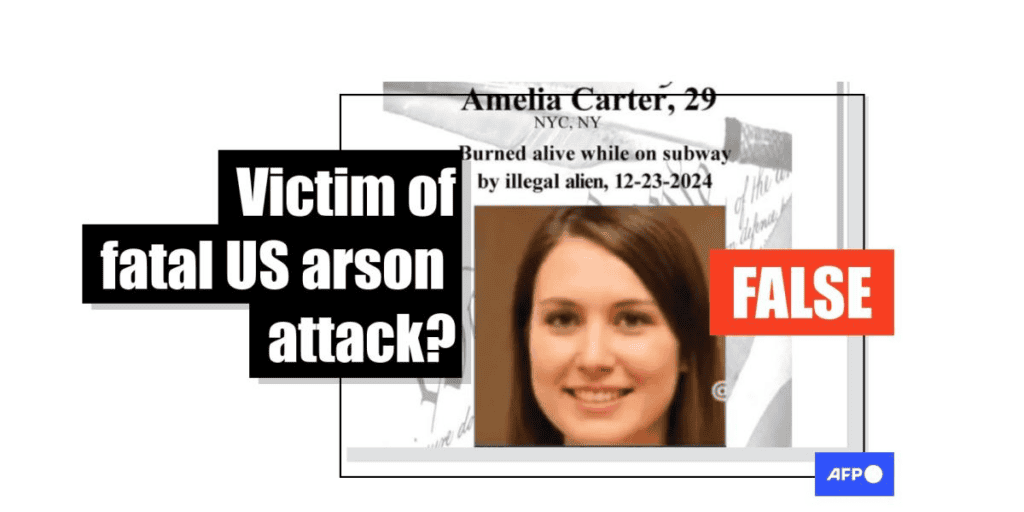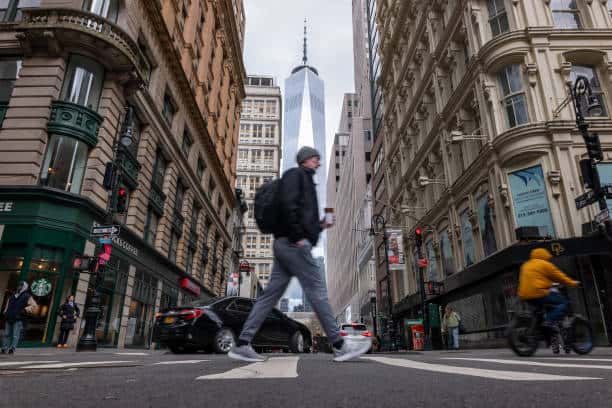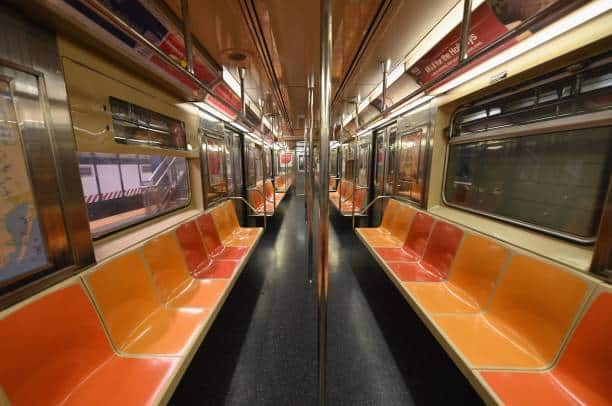Recent high-profile crimes on the New York City subway system, including the horrific arson death of Debrina Kawam, have spurred intense public anxiety over transit safety. This anxiety has been exacerbated by the proliferation of misinformation and sensationalism online, fueling widespread panic and distrust in official narratives. While authorities are addressing both the perception and reality of subway crime, the role of digital misinformation in amplifying fear cannot be ignored.
Following the Dec. 22 attack in which Kawam was fatally set on fire aboard a Brooklyn F train, a flood of misleading and fabricated narratives emerged online. Viral posts falsely identified the victim as “Amelia Carter” using both AI-generated images and misappropriated photographs of real individuals. These claims were debunked by Reuters, which confirmed that the New York Police Department (NYPD) had not yet publicly identified the victim as of Dec. 26.

The artificially generated image, created using StyleGAN2 software, was tied to a cryptocurrency meme coin named “Justice for Amelia,” further highlighting how opportunistic entities exploit tragedy for financial gain. Researchers noted distinct features in the AI-generated image that indicated manipulation, while AI text detectors found fabricated statements allegedly from the victim’s family to be entirely synthetic.
Although crime in the subway system has declined overall—down 5.4% in 2024 compared to 2023—sensational incidents like Kawam’s murder continue to dominate headlines and shape public perception (ABC News, 2025). NYPD Commissioner Jessica Tisch acknowledged the gap between statistics and sentiment, stating, “Declining crime numbers are significant, but we still must do more, because people don’t feel safe in our subways.”
Compounding this issue is the rapid dissemination of misinformation that skews public understanding of transit safety. False narratives online are amplified by viral sharing, creating a distorted view of the subway system as a lawless and uncontrollable environment.
The Internet’s Role in Spreading Panic
The internet has not only been a conduit for falsehoods but also a catalyst for panic. As noted in the New York Post, five consecutive days of violent subway incidents following Kawam’s death further intensified concerns, despite increased patrols by the NYPD, National Guard, and even the Guardian Angels (New York Post, 2025). This steady stream of reports, compounded by online commentary, creates a sense of imminent danger even as authorities point to overall crime reductions.
Misinformation spreads rapidly in part because it plays on fears of random, unpredictable violence. High-profile attacks, such as the fatal arson and a separate case where a man was pushed onto the tracks in Manhattan, garner significant attention and are often sensationalized online . Public officials have called for more effective communication to counteract this panic. Mayor Eric Adams emphasized the need to address both reality and perception, asserting that “perception always overrides reality” in the minds of New Yorkers.

Addressing the Impact
In response to public outcry, officials are doubling down on efforts to improve subway safety and rebuild trust. The NYPD has redeployed 200 officers to high-crime stations and increased patrols on subway trains, while state and city officials push for measures addressing mental health and repeat offenders.
However, combating the spread of misinformation requires a parallel effort. Clear, accurate communication from authorities and responsible reporting from media outlets are essential to restoring confidence in the transit system. As the Reuters investigation demonstrates, timely fact-checking can play a critical role in debunking harmful narratives and preventing further exploitation of tragedy.
References
- Reuters Fact Check. (2024, December 27). Fact Check: New York subway fire victim misidentified online. Retrieved from https://www.reuters.com/fact-check/new-york-subway-fire-victim-misidentified-online-2024-12-27/
- AP News. (2025, January 2). Suspect in NYC subway burning told police ‘that’s me’ when shown video, transcript says. Retrieved from https://apnews.com/article/new-york-city-subway-burning-94a5c2af2ac380a4ab991a5a40ab068e
- New York Post. (2025, January 2). NYC subways have seen attacks for 5 days in a row — despite cops, National Guard and even the Guardian Angels on patrol. Retrieved from https://nypost.com/2025/01/02/us-news/there-have-been-attacks-on-nyc-subway-5-days-in-a-row-despite-cops-national-guard-and-even-the-guardian-angels-on-patrol/
- ABC News. (2025, January 6). NYC increasing police presence in transit system: ‘People don’t feel safe in our subways’. Retrieved from https://abcnews.go.com/US/nypd-increasing-police-presence-subway-system/story?id=117387893


